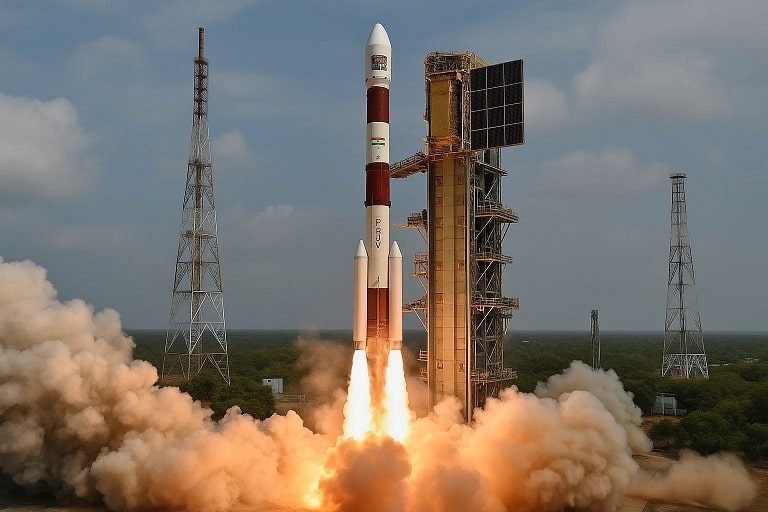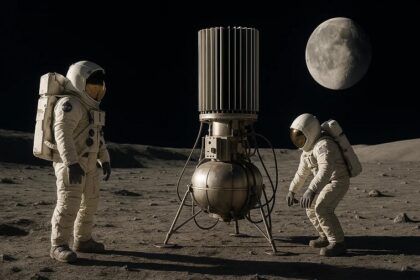India to Launch Massive US Satellite
Sriharikota, August 10, 2025 – The Indian Space Research Organisation (ISRO) is poised to cement its status as a global space powerhouse by preparing to launch a 6,500 kg US-built communication satellite, named Bluebird, in the coming months. This mission, following the successful launch of the NASA-ISRO Synthetic Aperture Radar (NISAR) satellite on July 30, 2025, underscores the deepening space collaboration between India and the United States, marking a significant milestone in their bilateral space endeavors.
A Leap from Humble Beginnings
India’s space journey began modestly in 1963 when the United States donated a small Nike-Apache sounding rocket, launched from Thumba, Kerala, on November 21, 1963. This gesture marked the inception of India’s space program, which was then six to seven years behind advanced nations. Fast forward six decades, ISRO has transformed from a fledgling agency to a global leader capable of launching massive foreign satellites. ISRO Chairman V. Narayanan, speaking at the 21st Convocation of SRM Institute of Science and Technology near Chennai on August 10, 2025, highlighted this growth, noting, “A country which received a tiny rocket from the United States is now going to launch a 6,500 kg communication satellite built by America using our own launcher from Indian soil. What a significant growth it is.”
The upcoming Bluebird mission, set for early 2026, will be the first time ISRO launches a large-scale US communication satellite, showcasing India’s reliable launch capabilities and indigenous rocket technology. This follows the landmark NISAR mission, which saw ISRO’s Geosynchronous Satellite Launch Vehicle (GSLV-F16) precisely place the 2,392 kg satellite into a sun-synchronous polar orbit (SSPO) at 747 km altitude on July 30, 2025.
NISAR: A Precursor to Greater Collaboration
The NISAR mission, valued at approximately $1.5 billion, represents the first joint hardware development between NASA and ISRO for an Earth-observing satellite. Launched from the Satish Dhawan Space Centre in Sriharikota, Andhra Pradesh, NISAR carries dual-frequency Synthetic Aperture Radar (SAR) systems—NASA’s L-band and ISRO’s S-band—capable of producing high-resolution images of Earth’s surface every 12 days. These radars, using SweepSAR technology, can detect minute changes as small as one centimeter, aiding in disaster prediction, climate change studies, and agricultural monitoring.
Weighing 2,392 kg, NISAR is the heaviest Earth observation satellite ever launched, requiring the GSLV’s power over ISRO’s usual Polar Satellite Launch Vehicle (PSLV) for SSPO missions. ISRO Chairman Narayanan praised the mission’s precision, noting the satellite was injected just 2 km off its planned orbit, earning accolades from NASA for ISRO’s expertise. The mission’s success, following two unsuccessful launches earlier in 2025, marked Narayanan’s first triumph as ISRO chief since taking over in January.
NISAR’s applications are vast, from monitoring glacial melting and coastal erosion to supporting agricultural productivity through soil moisture and crop health data. Its ability to operate 24/7, regardless of weather, using microwave frequencies, makes it a game-changer for global Earth observation. NASA contributed $1.2 billion, including the L-band SAR, radar reflector antenna, and communication systems, while ISRO invested $90 million, providing the S-band SAR, spacecraft bus, and launch vehicle. The satellite’s final assembly occurred at ISRO’s Satellite Integration and Testing Establishment in Bengaluru.
Bluebird: The Next Frontier
The Bluebird satellite, at 6,500 kg, dwarfs NISAR in mass and represents a new challenge for ISRO’s launch capabilities. While specific details about Bluebird’s purpose remain limited, it is described as an advanced communication satellite, likely aimed at enhancing global connectivity. ISRO’s ability to launch such a massive payload underscores the reliability of its GSLV and Long March series rockets, particularly the GSLV’s indigenous cryogenic upper stage, which was critical for NISAR’s precise orbital insertion.
This mission builds on India’s history of launching 433 satellites for 34 countries, a testament to its cost-effective and dependable launch services. Narayanan emphasized ISRO’s contributions to 55 applications, including television broadcasting, telecommunication, weather forecasting, disaster warning, and food security. The Bluebird launch will further solidify India’s role as a preferred launch provider, especially for the US, which has historically dominated satellite manufacturing.
Indo-US Space Ties: From Denial to Partnership
The upcoming Bluebird launch reflects the evolution of Indo-US space relations. In the 1990s, the US imposed sanctions blocking cryogenic engine transfers to India, forcing ISRO to develop its own. Ironically, the GSLV, powered by this indigenous technology, launched NISAR and will likely carry Bluebird. Key milestones in this partnership include Chandrayaan-1’s 2008 NASA Moon Mineralogy Mapper, Shubhanshu Shukla’s 2023 mission to the International Space Station, and India’s 2025 signing of the Artemis Accords for lunar exploration.
The 2023 Joint Vision Document on Space Cooperation outlined further collaboration in human spaceflight, planetary exploration, and commercial ventures. US companies like SpaceX and Blue Origin are eyeing partnerships with Indian startups like Skyroot and Agnikul, facilitated by India’s IN-SPACe initiative to open its space sector. This collaboration extends to space sustainability, with joint efforts in debris tracking and traffic management under frameworks like the UN’s Outer Space Treaty.
Geopolitical and Scientific Implications
The Bluebird launch and NISAR’s success position India as a counterbalance to China’s rapid space advancements, such as its Tiangong space station and Chang’e missions. While India aligns with the US-led Artemis framework, it maintains strategic autonomy, balancing international partnerships with indigenous innovation. However, challenges remain, including ensuring data sovereignty for NISAR’s open-access data, navigating US export control regulations like ITAR, and streamlining bureaucratic processes for joint missions.
Scientifically, NISAR’s terabytes of daily data will empower global researchers, while Bluebird’s communication capabilities could enhance connectivity in underserved regions. These missions align with India’s broader space goals, including the Gaganyaan crewed mission by 2027 and a space station by 2035, as articulated by Narayanan.
Conclusion: A New Era of Space Diplomacy
India’s ascent from a recipient of a donated rocket to a launcher of massive US satellites encapsulates its remarkable growth in space technology. The Bluebird mission, following NISAR’s triumph, not only strengthens Indo-US ties but also positions India as a leader in the global space arena. As ISRO prepares to triple its satellite fleet in the next few years, the world watches a nation that once lagged behind now standing “shoulder to shoulder with advanced countries,” driving innovation and cooperation in humanity’s quest to explore and connect the cosmos.













